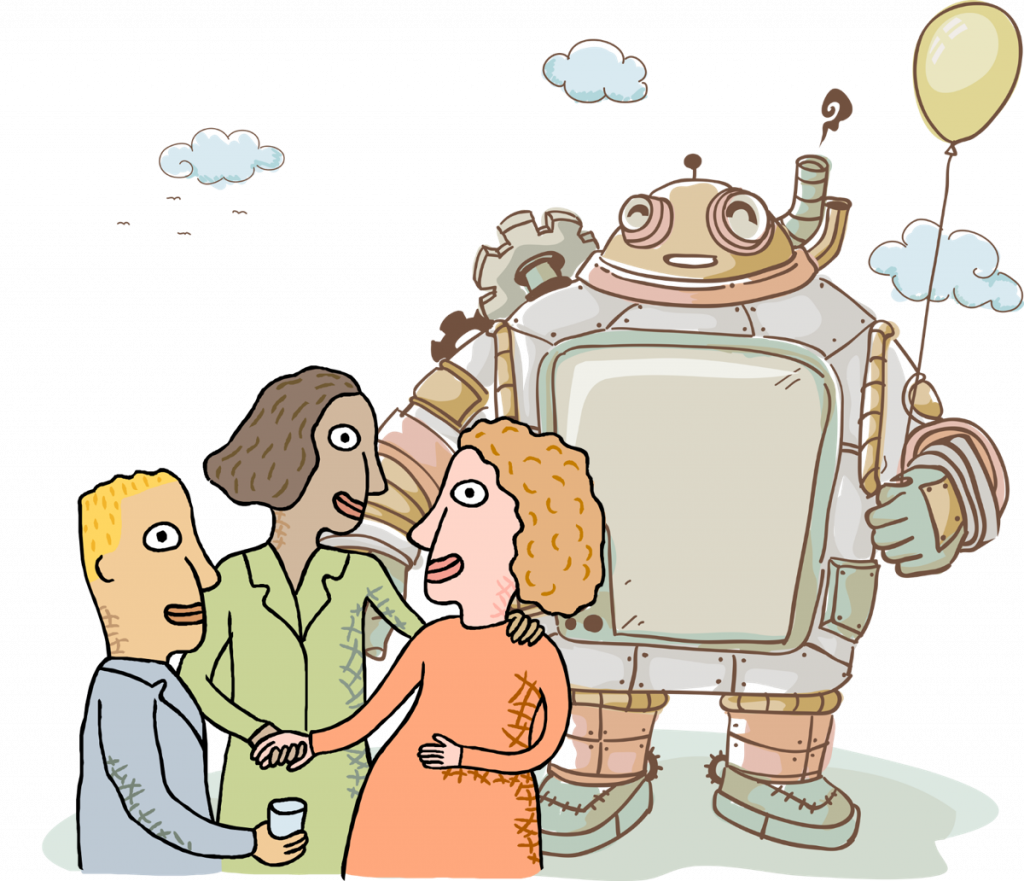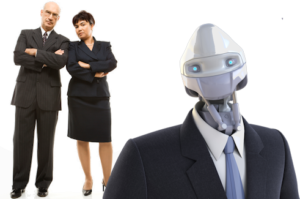U.S. Congressional debates about how emergency aid should be used during the novel coronavirus outbreak have focused on whether companies or individuals should receive the bulk of support payments. The end game is trying to ensure jobs are available once the country emerges so recovery can be as quick as possible. Some pundits fear the pandemic will accelerate corporate efforts to automate their businesses in order to reduce reliance on humans. While that may prove true in some cases, a more likely outcome is an acceleration of the hybrid workplace where machines (be they computer systems or robots) become coworkers. Mark van Rijmenam (@VanRijmenam) explains, “The Coronavirus crisis has many organizations struggling with the new reality. All of a sudden, entire offices had to shift to remote work, although they might not have been ready for it. However, ‘never waste a good crisis’ is a famous saying, and despite these challenging times, it also offers new opportunities for organizations. … The organization of tomorrow is a data organization. This means that organizations have to datafy their business processes and customer touchpoints and use analytics, blockchain, AI and other emerging information technologies to make their business more agile, efficient and customer-centric.”[1] Companies that can afford to retain workers during the pandemic may find the slowdown a perfect time to upgrade the skills of their workforce.
The hybrid workforce
Like van Rijmenam, Chetan Dube, Founder and CEO of IPsoft, believes we are in the midst of a significant period of change. He writes, “We’re deep in a transition from traditional labor and physical business models towards those that are touchless and digital.”[2] Van Rijmenam adds, “The employee of tomorrow is a digital employee, and that changes the future of work. Fortunately, there are plenty of tools available that can replace offline activities, including meetings, workshops, [and] brainstorming sessions.” Dube and van Rijmenam use the same term — digital employee — but van Rijmenam refers to humans and Dube refers to virtual employees. The inference is that both humans and virtual employees are becoming digital. However, to avoid confusion, I’ll change Dube’s term for virtual employees from “digital employee” to “digital co-worker.” Dube suggests there are five principles companies should embrace for designing a hybrid workplace and deploying AI-powered conversational systems. They are:
1. Empower your employees with digital [co-workers] to provide superior customer service, for example, with the digital employee acting as a whisper agent to guide the employee to improve consistency and accuracy.
2. Train your digital [co-workers] to achieve the desired outcomes and set them up to deliver against future use cases. As with human employees, investment should be made in identifying where the digital [co-worker] can create the most value, and the information and processes that will enable them to achieve this.
3. Design digital [co-workers] to be ‘channel agnostic’ to make experiences touchless and seamless. People don’t tend to think in terms of channel, they just want issues resolves (whether it’s a password resent or product refund). Create a central, seamless hub from which users can get the immediate support they need, whether they want to use text or voice to interact.
4. Apply smart design tactics to remove high friction, low-value human interactions. Identify interactions that are time-consuming, repetitive and low-value that digital [co-workers] can completely take over. Then, design the automated process based on how the human would interact to this query to deliver a seamless end-user experience. This means human representatives can focus on interactions with greater value to the customer or with higher revenue potential for the company.
5. Leverage digital [co-workers] to drive compliance and security throughout your organization by having them validate self-serve processes that might otherwise have taken human employees countless hours of resolution time. This also helps increase the security of processes information and reduces the risk of errors that can trigger security and regulatory issues, particularly in highly-regulated industries like healthcare and finance.
On the human side of things, van Rijmenam notes, “In the coming months, many organizations will experience the benefits of working remotely and having digital employees. The longer a lockdown and safety measure take across countries, the more your employees will be used to working remotely.” Almost by definition, remote workers are digital employees. Van Rijmenam suggests five benefits of using remote employees. They are:
1. Collaboration. “Collaborate in real-time and asynchronously with large teams, across time-zones. … It is relatively simple to collaborate with large teams, much easier than with ‘analog employees’. As a result, companies can continue to work as well as focus on a much-needed digital transformation across the organization.”
2. Workshops. “The problem with offline workshops is that if you did not attend, you would miss out a lot. With digital tools, those who missed can always go back and view what has been discussed and, more importantly, continue to contribute. This would add new ideas to the discussion, that otherwise would have been lost.”
3. Co-creation. “Co-creation and open strategy-making become a lot easier with digital employees. When distributing your strategy-making process to your employees, and including previously excluded actors in the discussion, the results are almost always positive. Thanks to analytics and AI, you will be able to collect your employees’ opinions and analyze them in real-time.”
4. Flexibility. Digital employees can work at times that work best for them. Not everyone is a morning person and appreciates having to show up in the office from 9 AM – 5 PM. Remote employees (should) have a lot of flexibility to determine their working hours, which has a lot of benefits in itself.”
5. Data. “Digital employees leave digital trails, and these trails can be analyzed for insights that could benefit the company. Transcribed and searchable virtual meeting notes add a lot of knowledge to the company that can be analyzed and tapped into.”
Not every business is going to transform in the ways described by Dube and van Rijmenam; nevertheless, all businesses should be thinking about how their operations will change in the post-pandemic future. Jian Cao, the Cardiss Collins Professor at Northwestern University, and Kevin Lynch, chair of mechanical engineering at Northwestern University, agree the future workforce is likely to be a hybrid workforce. They believe ongoing research will dramatically change “the way humans and automation work together.”[3] They don’t foresee massive layoffs from automation; rather, they see humans and machines working in entirely new ways. They explain, “The next 50 years will be characterized by the increasingly intimate integration of humans and robots, to marry the adaptability and context awareness of humans with the strength, precision, computing, and sensing capabilities of robots. From our first, halting steps beyond the ‘robots behind cages’ paradigm in the early 2000s, we will move toward brain-machine interfaces, neural interfaces, and other high-bandwidth power and information interfaces between humans, robots, and cloud/edge computing. Robots will no longer just be ‘wearable’ (think Sigourney Weaver’s exoskeleton ‘loader’ in Z) but bio-integrated, as we become increasingly dependent on our new perception, cognition, and action capabilities.”
Concluding thoughts
Regardless of which vision of the future workplace and workforce eventually emerges, technology will play a significant role. Van Rijmenam concludes, “The employee of tomorrow will be a digital employee, and the organization of tomorrow will be a data organization. Depending on how long this crisis will last, it is likely that the world will operate differently once we come out of it.”
Footnotes
[1] Mark van Rijmenam, “The Employee of Tomorrow will be a Digital Employee,” Datafloq, 27 March 2020.
[2] Chetan Dube, “Prepared for the Digital/Human Hybrid Workforce?” The HR Director, 2 March 2020.
[3] Jian Cao and Kevin Lynch, “Humans Are Underrated,” IndustryWeek, 19 February 2020.





